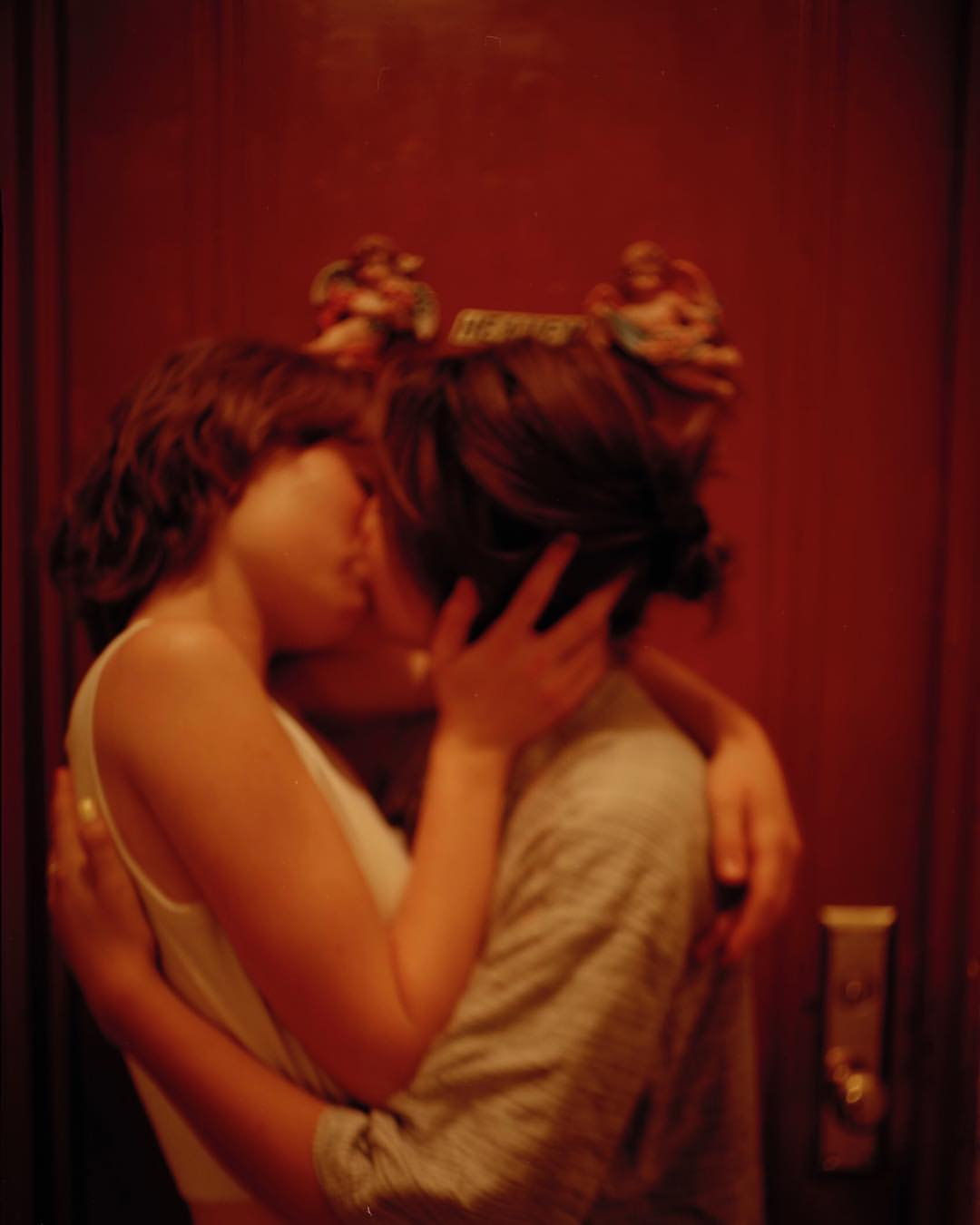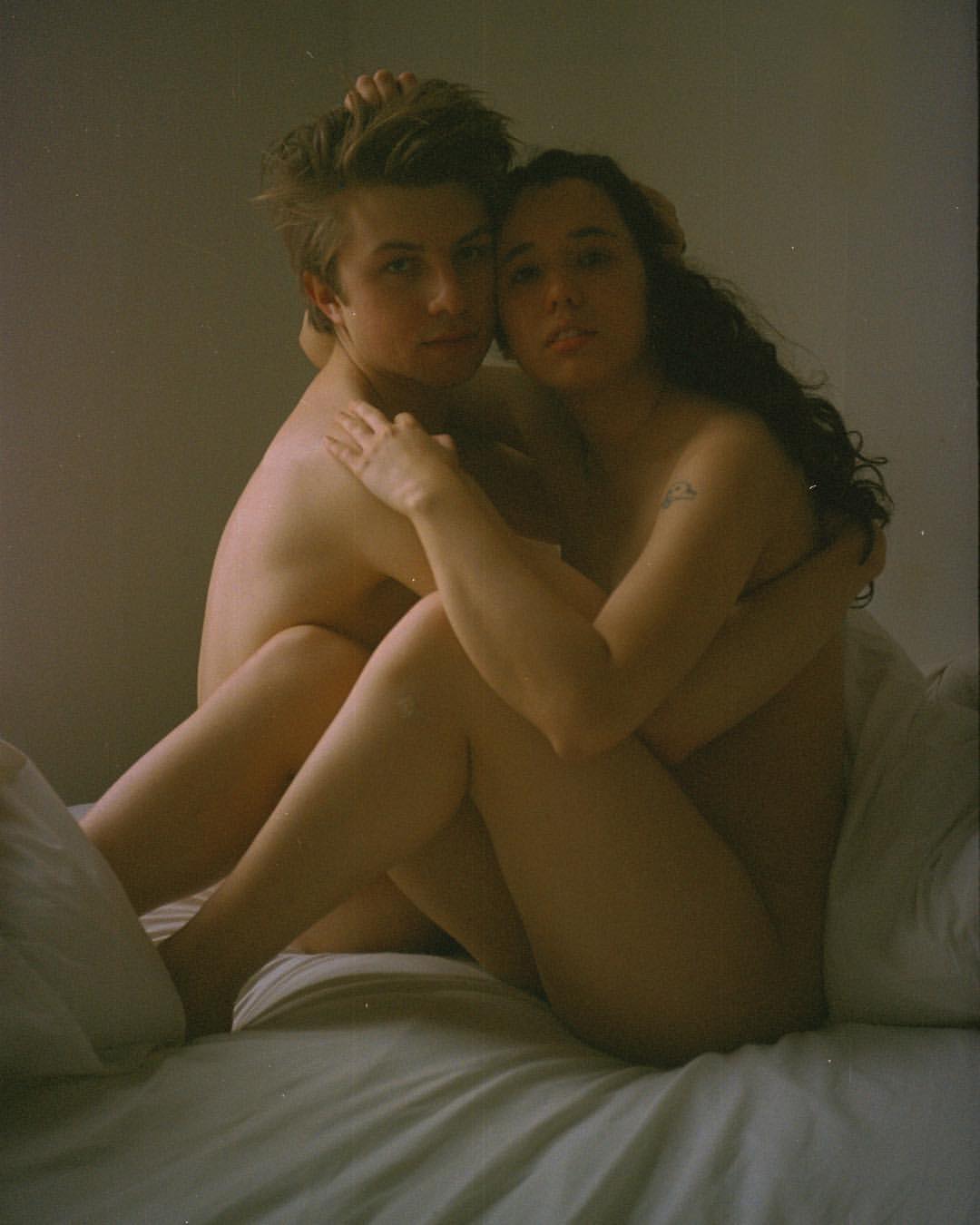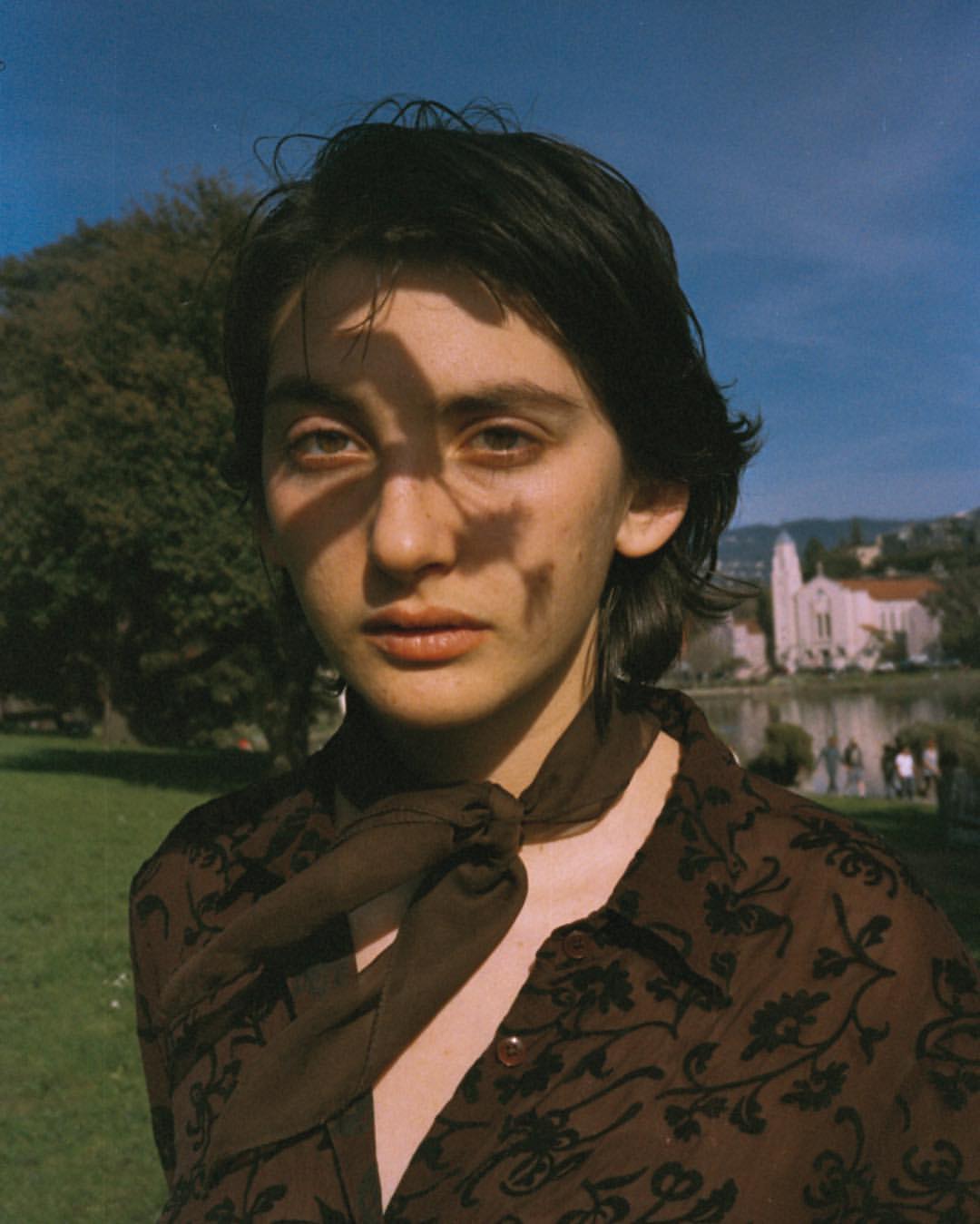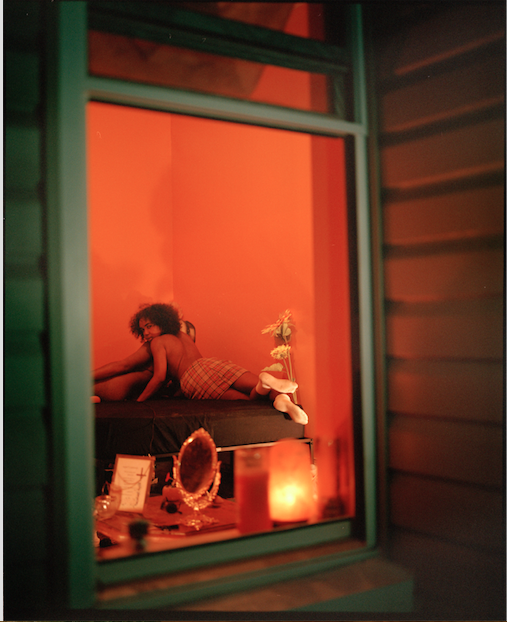Photographer, curator and activist Jheyda McGarrell creates work to speak to people of colour, specifically queer people of colour. Describing their work as a kind of “suburban surrealism” and a mix between documentary and magical realism, I interviewed them to find out more about their creative journey.
Share more about how your creative journey began?
I always like to think my creative journey began at birth. My family on my mom’s side is Mexican and composed of artisans, musicians, etc. My ancestral roots flow through my body and connect to my core. My personal creative journey began when my dad gave me a point and shoot camera in the 3rd grade, since then I have been fascinated by documentation.
How do you like to describe your work?
I like to describe my work as a mix between documentary and magical realism. There is this quality of surrealism that exists in faux documentation – in creating moments that exist between reality and creation. I want my work to embody something I like to call “suburban surrealism”, or as I define it the surrealism that presents itself as blips in the timelines of monotonous environments and occurrences. My work seeks to represent my existence in this body and create moments that could have potentially naturally occurred.
Who do you see as your audience?
I think I see replicas of myself as my audience: young, fat, black, Mexican, indigenous, queer, all the descriptors that could be used for me, is who I desire to be rejoicing in my work. I want to be the representation that I never had and still don’t feel included in many times. I want my audience to be people searching for a vision of life and a body they can relate to.

Activism plays an important part in how and why your work is created. Share more about how this filters into your work?
Basically, I think a big part of activism that is missing is the accessibility of imagery that normalises the lives of POC. Much of the content that we take [in] as POC, revolves around whiteness and our relationship to whiteness, but without that relationship we cease to exist; cease to have our own storylines, character development, or personalities. A large part of the motivation for my work is to create a new vernacular in black imagery, to formulate a completed life and times of a person of colour, to represent our joy, our pain, our love, our heartbreak.
When I started creating I was by most considered, too fat, too ugly, and too loud. I was undesirable to them, so I used this energy to create beautiful representations of people who looked like me. I wanted to make myself fall in love with the things people had told me were wrong with me. Now in the future, I have become much more acceptable [to society] but I make every single piece of my work for the little girl inside of me that is heartbroken by a world that tells her she is too much. I want to use my work to empower people and help them decolonize their idea of beauty and their idea of how we are supposed to act. I think doing whatever I want and being vulnerable is an act of rebellion against a society that tells black women we must silence our pain, speak in low tones, minimize our bodies, and press out our kinks to be accepted. Existence is resistance.
You are part of Art Hoe Collective. Please share more about the collective and how this connects to your individual practice?
Art Hoe Collective is an internet art platform highlighting specifically work by People of Colour and a community building organization. We give talks about topics relating to POC in arts, curate art shows, host workshops, etc. It was started to provide support for QTPOC artists and highlight the talent in communities of colour that goes largely unnoticed by a Eurocentric Art world. This connects to my personal practice because I believe so largely in art’s ability to heal, Art Hoe Collective is a healing space. Meeting these people and joining a space where I have felt accepted has meant so much to me. It has been the difference between self-hatred/doubt and self-love and confidence. Many artists of colour share the experience of being outcast from our families for our queerness and our desire to live outside binaries imposed on our bodies by colonialism and capitalism, Art Hoe Collective desires to become that support system- to be a family for those seeking to decolonize and express themselves.
What are some of the common themes you like to work with? Why do these themes appeal to you and the message you are trying to convey as a photographer/activist/artist?
Themes I work in usually actively present in my life because I do not believe people should seek to represent what they cannot relate to. These naturally occurring themes would be race, queerness, body image, deconstruction of memories, socioeconomic privilege, and multiculturalism among others. These things appeal to me because I am using my art to discover myself, I am dissecting my own life and piecing it back together with fragmented portions I have recreated through images. I want to be the one to tell the story of my experience, to pull imagery back from the recurring exploitative view in which we are constantly presented.
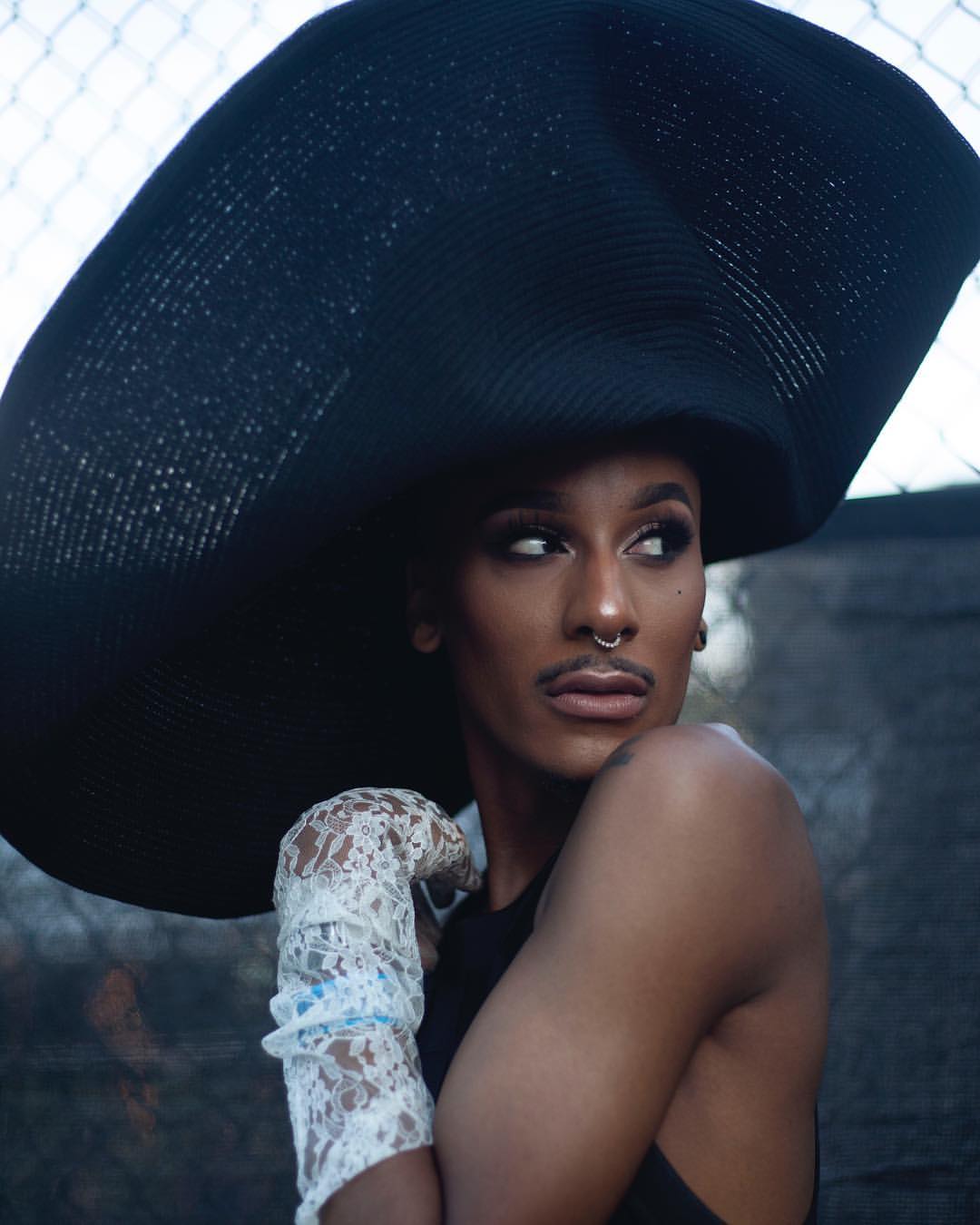
Are there particular conceptual and/or aesthetic threads you use to tie your work together?
There is definitely a lot of recurring imagery in my work small things such as roses, crosses, white socks/black shoes, and many others that I’ll leave up to audiences to notice. These are all small markers of memories and small things that I believe influence black/brown bodies. To explain the ones I’ve listed: Roses- when I was younger my family had roses planted all along the front of our house, they grew with us, they died with us, we pruned ourselves to keep growing together, also roses are heavily symbolic in Mexican culture and I want to speak to that; Crosses- when I was young I was heavily existential and after being assaulted I sought God to find purpose, I spent years in many different churches, even had a cousin who was interested in religion take me to explore Judaism, the Quakers, Catholicism, 7th Day Adventists, etc. I was raised in a Christian town and became close to a group of Mormons from a very young age and would occasionally attend church with them. One day, I attended and we read the portion of the book of Mormon that states that black people are evil and anyone that shall reproduce with them are evil, I stood up, left, and never returned. Crosses have become my symbol for the black body’s ability to maintain strength against a system of belief in God that tells us our body is incorrect; White socks and black shoes tie into this notion and the notion of a uniform. The accessibility to fashion and clothing has not been afforded to most POC so one way I ground myself in the reality of this with a chosen aesthetic that brings me comfort and (occasionally) brings others discomfort, or at least to do some sort of questioning.
What are you working on at the moment?
Right now, I’m about to graduate from NYU so I’m currently working on my thesis. It’s a series of photos focusing on the conceptual representation/dissection of blackness and how its relationship to my Mexicanness. This series is a personal melding of my interests in documentation, creation, and self-reflection. I wanted to complete my time at university by thoroughly ruminating on who I am and how my cultures intersect. Besides that, I’m currently putting out a zine called ‘Solar Year: The Devil works hard but Jheyda McGarrell works harder‘, working on a book with Snoar Press (London), planning an installation room in South LA at an entirely women-run studio, working on pieces for Nook Gallery (Oakland), among some other secret movements.

